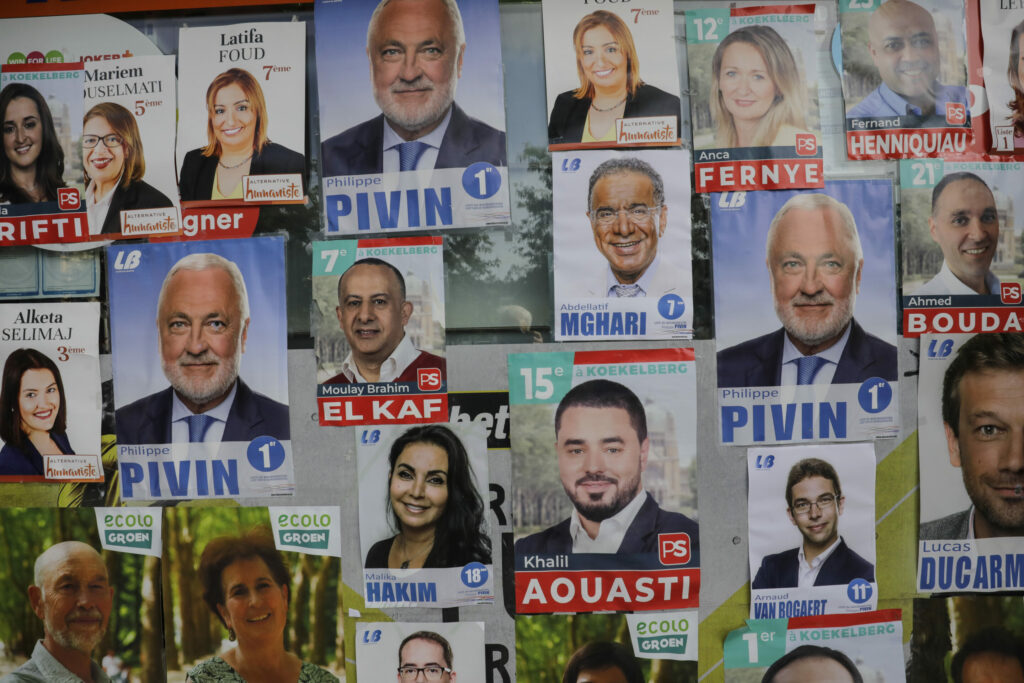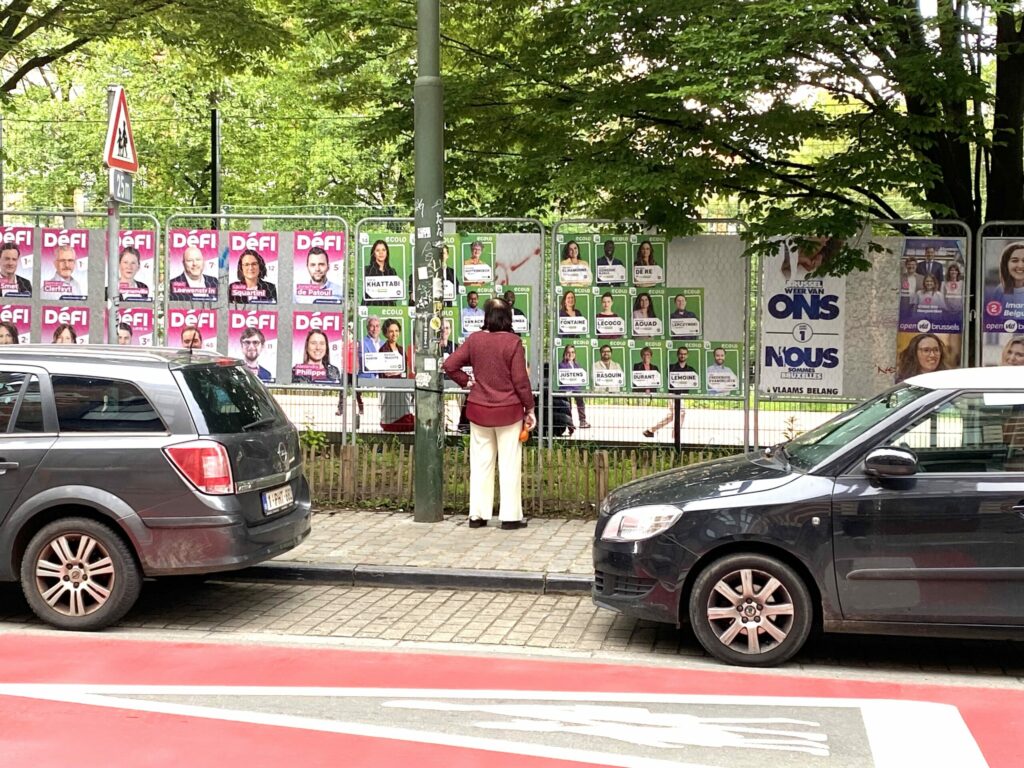With the local elections in less than three weeks, candidate posters displaying their list numbers are popping up across the Brussels-Capital Region. But how do these lists work, and how do you vote for your municipal council?
While the municipality is the lowest level of power in Belgium, it is also the one people are closest to and it has a daily impact on residents: either through its own policies or as an intermediary between citizens and the Belgian State.
But do local authorities get elected? From electoral lists and "list-pushers" to preferential votes and city councillors, here's what you need to know.
How does the list system work?
All parties running in the municipal elections in one of Brussels' 19 municipalities have to submit "a list" of candidates representing them. In total, 124 lists and 3,809 candidates will be running on 13 October.
A municipal list only includes the candidates for that municipality, meaning a voter in Schaerbeek cannot elect a candidate from Koekelberg.
How are local lists different from federal or regional ones?
Unlike during the federal or regional elections, the municipal elections often have lists that are not linked to the traditional Belgian parties. This means people entering the voting booth in some municipalities might not find Les Engagés or Groen, for example, but will instead see lists called 'Collectif Citoyen', 'Uccle En Avant', or 'RNV'.
In addition to that, there are also joint lists. Sister parties from both sides of the language border often fuse on local lists (such as MR-Open VLD or PS-Vooruit) but alliances can also be made across party borders, such as the MR-Les Engagés list in Saint-Gilles, or even the MR-Les Engagés-VLD-CD&V list in Anderlecht.

Posters for local elections in Brussels in 2018. Credit: Belga/Thierry Roge
Importantly, mayors often create a "Liste du Bourgemestre" (Mayor's list) in their municipality. This is either because they renamed the local branch of their own party to make it clear to voters that this is the list the mayor is on, or because the mayor and several other candidates have formed a coalition which they then present to as the mayor's list.
If, on a joint list, a voter likes a specific party more than the other, they can vote for candidates from this party. Once in the voting booth, however, it is no longer indicated which candidates belong to which parties – meaning it requires some research in advance.
How is a list structured?
When parties compile their list of candidates, they usually put their most "famous" or well-known candidate – such as a minister, mayor, party leader or even celebrity – in the first spot (the list-header). This way they are more likely to catch the eye of voters.
The number of candidates that get elected depends on the proportion of votes a party gets: more votes means more candidates in the municipal council. Therefore, parties usually put those with the most chance of attracting votes high on the list.
This system means also that the higher a candidate is placed on the list, the more likely they are to get elected to the council. If a party wins just one seat, only the person who received the most votes (usually the lead candidate) will get onto the municipal council. If the party wins three seats, the top three candidates will be elected. However, this can vary, depending on the number of preferential votes (explained further down).

Election posters. Credit: Belga/Eric Lalmand
Sometimes, the last person on the list also has a symbolic role: the so-called "list pusher" ('lijstduwer' in Dutch, 'pousseur de liste' in French). Like the first person on the list, the list pusher is traditionally someone well-known to the public who will attract votes.
These people – often former politicians with strong personalities – are expected to collect many votes but they are usually not looking to get (re-)elected. Instead, they place themselves on the end of the list to express their support to the entire list. While it is not uncommon that they still get elected from the bottom of the list, they normally opt to play more of a symbolic role.
Different kinds of votes?
Voters can cast a "list vote" for an entire party, or a "preferential vote" for one (or more) candidate(s) from one list.
By casting a "list vote" they choose the entire party and give their support to the entire list of candidates, as proposed by the party, without preference for a particular person on that list.
By casting a "preferential vote" for an individual candidate, voters can change which candidates get a seat on the municipal council.

Election posters from 2014. Credit: Belga/Carole Heymans
If a party wins three seats, that theoretically means that the first three candidates on the party list would go on to the municipal council. However, if the candidate in the fourth place on the list received more preferential votes than the one in the third place, the fourth place will go into the council.
People can give a preferential vote to more than one candidate but all names must be from the same list. It is not possible to vote for one candidate from a certain party and another from a different party. If a voter does that, their votes will be invalid.
When someone votes for the entire list but also for one or several candidate(s) from that list, the "preferential votes" will take priority and the "list vote" will not count.
How does a municipal council work?
Municipal councils are essentially mini-governments: they are responsible for the legislative function at the local level.
What does a municipal council look like?
The members of these councils are directly elected every six years. Councils vary in size from 27 to 49 members, depending on the population of that municipality. Brussels City, for example, has 49 members, while Berchem-Saint-Agathe, Koekelberg and Ganshoren have 27.
These members vote on the municipal regulations and decisions, the budget and the accounts. They also appoint the city councillors (échevins/schepenen). In theory, municipalities must have at least two, but in practice most have more. Koekelberg, the least populated municipality in the Capital Region has seven. Together with the mayor, they form 'the college of mayor and city councillors'.
The municipal council can also elect a chair (usually the mayor, but not always) and a deputy chair from among its members for the duration of the term of office.

A women observes election candidate posters in Saint-Gilles, May 2024. Credit: The Brussels Times
What does a municipal council do?
As the closest political authority to the people, the municipality decides on issues that influence everyday life: cycle paths in the municipality, subsidies for youth associations, play and hangout areas for young people, how much street lighting is somewhere, rules on nuisance and loitering, and many more local policies.
In addition, municipalities must also implement decisions taken at higher political levels, such as the Brussels-Capital Region or the Federal Government. Examples include arranging identity and residency cards, passports and driving licences.
Lauren Walker contributed to this article.

